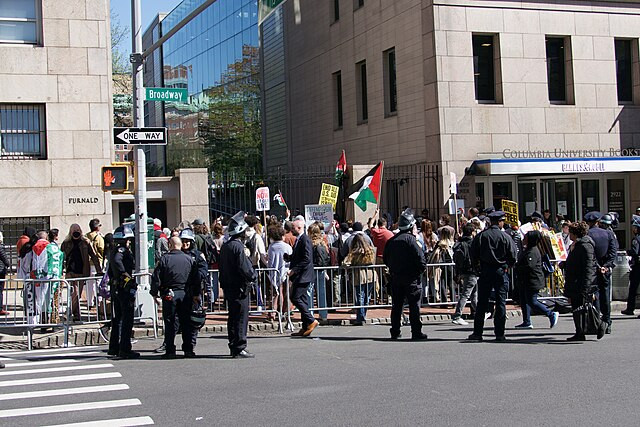A recent incident at Columbia University has drawn significant attention after an NYPD officer unintentionally discharged a firearm while clearing a building taken over by protesters. The incident occurred late at night in Hamilton Hall as officers attempted to navigate barricaded areas. The discharged round struck a wall frame but fortunately resulted in no injuries.
The situation at Columbia is part of a broader wave of campus protests across the United States, where more than 2,200 individuals have been arrested in recent weeks. These protests, largely driven by pro-Palestinian groups, have sparked discussions on the Israeli military campaign in Gaza and calls for divestment from Israel at educational institutions nationwide.
In response to the takeover of Hamilton Hall by protesters, which began on Monday and continued into Tuesday, Columbia University President Minouche Shafik requested NYPD assistance to clear the building. The operation saw officers entering through windows and methodically removing protesters and their encampments.
Amidst the backdrop of these protests, there has been a significant spike in both antisemitism and Islamophobia, raising concerns among Jewish and Muslim students alike. The contentious nature of the protests and the police response has intensified debates about freedom of speech and the appropriate use of force in handling demonstrations.
The officer involved in the accidental shooting at Columbia was part of the Emergency Service Unit, a detail that underscores the tense atmosphere surrounding the police intervention. NYPD has since conducted an immediate investigation into the incident, concluding that the discharge was accidental. The Manhattan District Attorney's Office is currently reviewing body camera footage from the event.
This incident has further stoked the fires of a national conversation about campus activism and law enforcement tactics. Across the country, from UCLA to the University of Texas at Austin, police have arrested scores of demonstrators, many of whom were engaged in peaceful protests. Critics argue that the heavy-handed police tactics are exacerbating tensions and infringing on students' rights to free speech.
In Austin, for instance, Arwyn Heilrayne, a freshman at the University of Texas, described a chaotic scene where she was taken to the ground and arrested without provocation. Her charges were later dropped, but the experience left a lasting impact on her perception of police conduct during protests.
Similarly, at the University of Wisconsin-Madison, a senior reported aggressive police actions during her arrest, which involved being dragged and thrown on concrete. These accounts have prompted calls for a reassessment of how law enforcement handles protests, particularly on college campuses.
The administration of several universities, while defending their decision to involve law enforcement, faces criticism not just from students but also from some faculty members who have found themselves caught up in the arrests. Emory University's philosophy department chair, Noelle McAfee, was one such faculty member who was arrested after she intervened to stop police from using excessive force against a protester.






